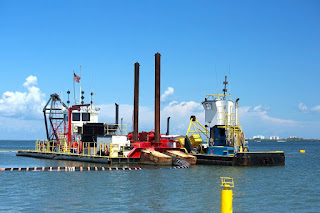Marine construction projects are complex endeavors that involve a myriad of challenges, both foreseeable and unforeseeable. Identifying and mitigating risks in such projects is crucial for success. In this article, we will explore some of the most significant probability risks that loom over marine construction, shedding light on the potential impacts and strategies to navigate these challenging waters.
1. Adverse Weather Conditions: The Unpredictable Force of Nature
Probability Risk: One of the most formidable challenges in marine construction is the unpredictability of weather conditions. Storms, hurricanes, high winds, and rough seas can significantly impact construction timelines and pose a threat to the safety of personnel and equipment.
Mitigation Strategies:
- Utilize advanced weather forecasting systems for real-time monitoring.
- Implement flexible project schedules that account for weather-related delays.
- Incorporate weather-resistant construction materials and methods.
2. Geotechnical Uncertainties: Beneath the Surface Challenges
Probability Risk: Unknown geological conditions below the water's surface can pose a substantial risk to marine construction projects. Subsurface complexities such as soft soils, unexpected rock formations, or shifting sediments can lead to delays and increased costs.
Mitigation Strategies:
- Conduct thorough geotechnical surveys before project commencement.
- Implement adaptive construction techniques to respond to unexpected subsurface conditions.
- Employ specialized equipment for real-time monitoring of seabed conditions.
3. Supply Chain Disruptions: The Ripple Effect
Probability Risk: Marine construction projects often involve the procurement of specialized materials and equipment. Supply chain disruptions, including delays in the delivery of essential components, can have a cascading effect on project timelines and costs.
Mitigation Strategies:
- Diversify suppliers to reduce reliance on a single source.
- Maintain strategic stockpiles of critical materials.
- Develop contingency plans for alternative suppliers and transportation routes.
4. Regulatory Compliance Challenges: Navigating Legal Waters
Probability Risk: Stringent environmental regulations and permitting processes can create hurdles for marine construction projects. Delays in obtaining necessary approvals or unexpected regulatory changes can impede progress and increase project costs.
Mitigation Strategies:
- Engage with regulatory authorities early in the planning phase.
- Stay informed about evolving environmental and safety regulations.
- Develop a comprehensive understanding of the permitting process and potential challenges.
5. Unforeseen Subsurface Obstructions: Hidden Hazards
Probability Risk: Marine construction projects face the risk of encountering unexpected obstacles below the waterline, such as sunken structures, debris, or abandoned infrastructure. These hidden hazards can lead to project delays and pose safety concerns.
Mitigation Strategies:
- Conduct detailed underwater surveys before construction begins.
- Employ advanced sonar and imaging technologies for subsurface mapping.
- Develop contingency plans for the removal of unexpected obstacles.
Conclusion:
Navigating the complexities of marine construction projects requires a proactive approach to identify and mitigate probability risks. From adverse weather conditions to geotechnical uncertainties and supply chain disruptions, understanding these challenges is the first step toward successful project management. By implementing robust risk management strategies and fostering a culture of adaptability, marine construction projects can overcome the biggest probability risks and chart a course towards safe, efficient, and successful completion.




